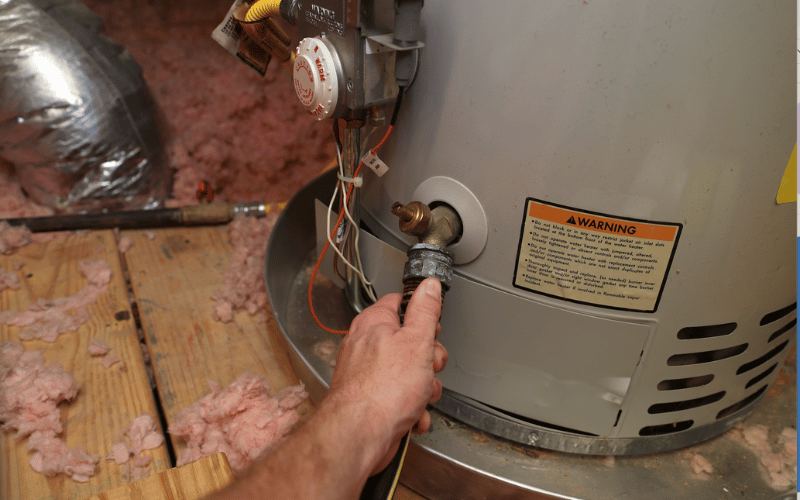Step-by-Step Guide to Caring for Your Home's Hot Water System
Step-by-Step Guide to Caring for Your Home's Hot Water System
Blog Article
How do you feel on the subject of Water Heater Maintenance Tips You Can't Afford to Forget?

Hot water is necessary for day-to-day convenience, whether it's for a refreshing shower or cleaning recipes. To ensure your warm water system runs successfully and lasts much longer, regular maintenance is crucial. This post provides useful suggestions and understandings on how to maintain your home's warm water system to stay clear of disruptions and costly fixings.
Introduction
Maintaining your home's hot water system may appear overwhelming, but with a few easy actions, you can guarantee it runs efficiently for years to find. This overview covers every little thing from understanding your hot water system to DIY maintenance ideas and recognizing when to call professional help.
Significance of Preserving Your Warm Water System
Normal upkeep not just expands the life-span of your warm water system but also ensures it operates effectively. Ignoring upkeep can bring about reduced effectiveness, greater power expenses, and also early failure of the system.
Indicators Your Warm Water System Needs Maintenance
Knowing when your hot water system needs attention can prevent major issues. Look out for signs such as inconsistent water temperature, strange sounds from the heating system, or rusty water.
Understanding Your Warm Water System
Prior to diving right into upkeep tasks, it's useful to understand the basic elements of your hot water system. Generally, this includes the hot water heater itself, pipelines, anode poles, and temperature level controls.
Regular Monthly Maintenance Tasks
Normal month-to-month checks can assist catch minor concerns prior to they intensify.
Flushing the Water Heater
Flushing your hot water heater eliminates sediment buildup, improving performance and extending its life.
Monitoring and Changing Anode Rods
Anode poles avoid corrosion inside the container. Evaluating and changing them when worn out is crucial.
Examining and Readjusting Temperature Setups
Changing the temperature setups ensures ideal performance and security.
DIY Tips for Maintenance
You can execute a number of maintenance jobs yourself to keep your warm water system in top condition.
Checking for Leakages
On a regular basis inspect pipelines and connections for leakages, as these can cause water damages and higher costs.
Evaluating Stress Relief Valves
Examining the stress relief valve guarantees it functions appropriately and stops excessive pressure buildup.
Shielding Pipelines
Insulating warm water pipelines decreases heat loss and can save energy.
When to Call a Specialist
While DIY upkeep is advantageous, some problems require specialist competence.
Complex Problems Requiring Expert Aid
Examples consist of significant leakages, electrical issues, or if your water heater is constantly underperforming.
Regular Expert Maintenance Perks
Expert upkeep can include thorough examinations, tune-ups, and guaranteeing conformity with safety and security standards.
Final thought
Regular upkeep of your home's hot water system is necessary for efficiency, long life, and cost financial savings. By following these pointers and recognizing when to look for professional aid, you can make certain a trustworthy supply of hot water without unexpected interruptions.
How to Maintain an Instant Hot Water Heater
Before tinkering with your hot water heater, make sure that it’s not powered on. You also have to turn off the main circuit breaker and shut off the main gas line to prevent accidents. Also turn off the water valves connected to your unit to prevent water from flowing into and out of the appliance. 2. When you’re done, you have to detach the purge valves’ caps. These look like the letter “T†and are situated on either side of the water valves. Doing so will release any pressure that has accumulated inside the valves while at the same time avoid hot water from shooting out and burning your skin. 3. When the purge valves’ caps are removed, you have to connect your hosing lines to the valves. Your unit should have come with three hoses but if it didn’t, you can purchase these things from any hardware or home repair shops. You can also get them from retail stores that sell water heating systems. Read the user’s manual and follow it to complete this task properly. When the hosing lines are connected, open the purge port’s valves. 4. You should never use harsh chemical cleaners or solutions when cleaning your unit. Make use of white vinegar instead. It should be undiluted and you’ll probably use about 2 gallons. 5. Now flush your water heater. This task should probably take about 40 minutes. We can’t give you specific directions for this because the procedure is carried out depending on the type, model and brand of your heater. With that being said, refer to the user’s manual. 6. When you’re done draining the unit, you have to turn off the purge port valves again. Remove the hosing lines that you earlier installed on each of the water valves. Put the valve caps (purge port) back in their respective places and be very careful so as not to damage the rubber discs that are found inside these caps. 7. Now that everything’s back in place, check your user’s manual again to find out how to reactivate your water heating system. 8. Once it is working, turn one of your hot water faucets on just to let air pass through the heater’s water supply pipes. Leave the tap on until water flows smoothly out of it. https://www.orrplumbing.com/blog/2014/september/how-to-maintain-an-instant-hot-water-heater/

Hopefully you enjoyed our section on Water Heater Maintenance Tips You Can't Afford to Forget. Many thanks for finding the time to browse our article. Be sure to take the opportunity to distribute this post if you liked it. Thanks for your time. Come back soon.
Call Today Report this page